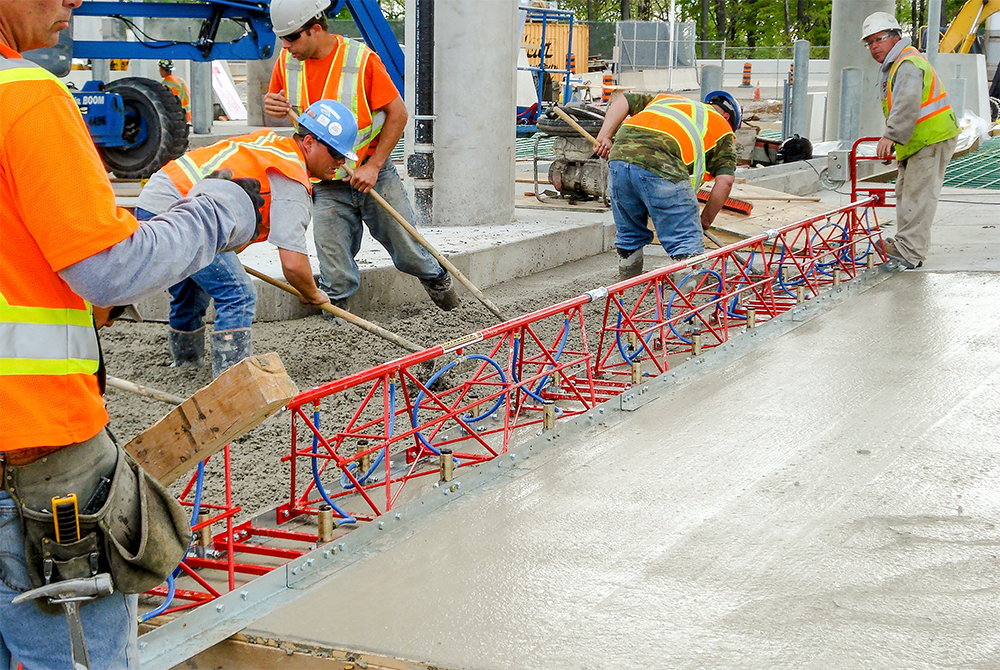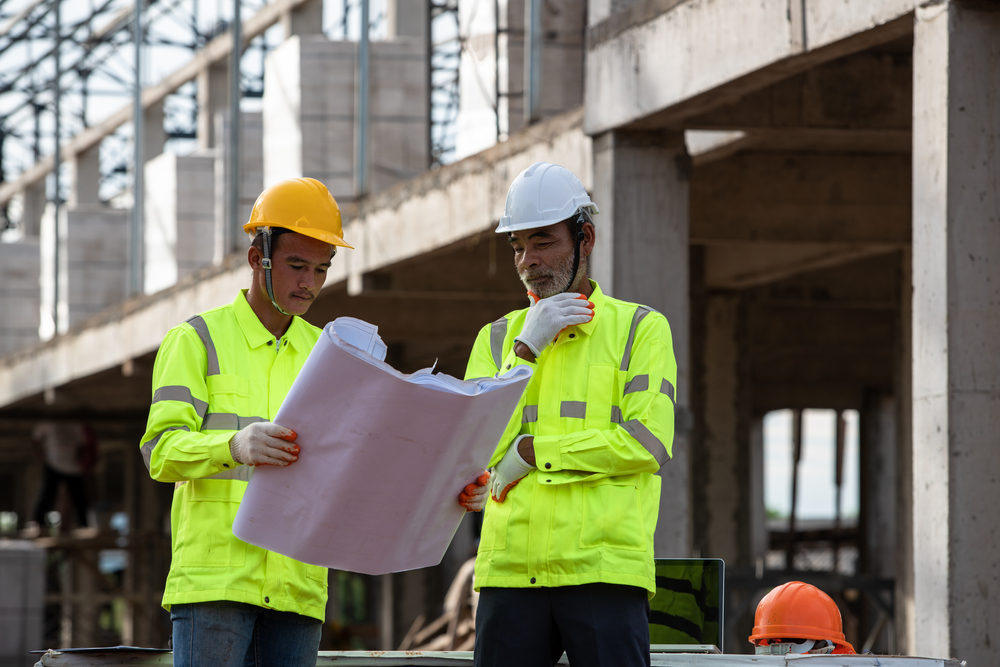Recognizing the Numerous Applications of General Engineering Concrete in Diverse Industries
When you consider the numerous means general engineering concrete impacts various sectors, you'll find its applications are both broad and important. From offering tough foundations for transportation networks to supporting cutting-edge power options, this product plays a key duty fit our infrastructure. What regarding its impact on city development and ecological engineering? Checking out these elements can disclose a lot even more than you might anticipate.
The Role of Concrete in Building And Construction and Building Projects
Concrete plays an important function in construction and building tasks, comprising about 70% of all products utilized in contemporary structures. You'll locate it in foundations, walls, and floorings, offering strength and durability. When you pick concrete, you're choosing a material that can stand up to weather condition conditions, resist fire, and assistance heavy loads. Its flexibility enables different applications, from household homes to imposing skyscrapers.Mixing concrete with ingredients can enhance its residential properties, improving workability and establishing times. You can also mold it into various shapes, permitting creativity in design. As you function on your projects, consider the ecological advantages of making use of concrete, such as its capability to lower energy intake in buildings. On the whole, concrete's reliability and versatility make it a keystone of the building and construction market, guaranteeing that structures are not only practical yet also risk-free and resilient.
Infrastructure Advancement: Roads, Bridges, and Tunnels
When it pertains to facilities advancement, roadways, bridges, and tunnels are essential parts that link neighborhoods and help with transportation. You count on these frameworks daily, whether you're commuting to work or traveling fars away. General engineering concrete plays a crucial duty in their building and construction and longevity. Its toughness and flexibility allow designers to develop durable roadways that hold up against hefty web traffic and severe weather conditions.Bridges, usually spanning rivers and valleys, call for particularly created concrete to guarantee safety and longevity. Using strengthened concrete in passage building not only sustains substantial weight yet also boosts resistance against water seepage and ground movement.

Concrete in Transport: Enhancing Movement and Safety And Security
As you navigate through bustling cities and rural roads, the role of concrete in transportation becomes evident, greatly improving both flexibility and safety and security. Concrete's durability assurances that roads, paths, and bridges hold up against rush hour and harsh weather conditions. This longevity reduces the requirement for frequent repair work, keeping your journeys smooth and reliable.In addition, the style versatility of concrete enables innovative frameworks like overpasses and passages, which effectively lower congestion and enhance web traffic circulation. You'll notice that concrete surface areas also provide better grip, decreasing the possibility of mishaps in wet conditions.Moreover, making use of concrete in trains aids keep stability and security for trains, making your journeys much more effective. In general, concrete's contributions to transportation not only improve your wheelchair but additionally considerably bolster public security, mirroring its vital duty in the facilities you depend upon daily.

Power Sector Applications: From Power Plants to Renewable Power
In the power field, concrete plays a significant role in the construction and procedure of nuclear power plant and renewable resource installments. You'll locate it crucial for building strong structures, sustains, and control frameworks that endure extreme problems. In thermal nuclear power plant, reinforced concrete structures guarantee safety and security and durability versus high temperature levels and pressure. WCGE commercial concrete.When it comes to sustainable power, concrete is important for wind turbine bases, solar panel installs, and hydroelectric dams. It provides the stability needed to harness power efficiently. You might not understand it, but the concrete used in these applications is specifically created to fulfill particular efficiency requirements, like longevity and resistance to environmental variables
Cutting-edge Concrete Solutions in Environmental Design

The Influence of Concrete on Urban Growth and Landscape Design
Concrete plays a vital role in forming urban advancement and landscape design, affecting everything from framework sturdiness to aesthetic appeal. When you assume of cityscapes, concrete frameworks like bridges, roads, and buildings come to mind, providing a sturdy foundation for urban life. You'll observe how properly designed concrete paths and plazas enhance public spaces, making them a lot more welcoming and functional.In landscaping, concrete offers versatility, allowing creative layouts for patio areas, keeping walls, and ornamental functions. You can develop unique outdoor rooms that blend perfectly with nature while preserving structural stability. Additionally, concrete's capability to hold up against weather extremes guarantees longevity, lowering the need for constant repairs.
Future Trends and Advancements generally Design Concrete
As city landscapes advance, the need for cutting-edge concrete options is driving developments as a whole design. You'll discover fads leaning towards green products and sustainable techniques. Researchers are concentrating on developing high-performance concrete that minimizes environmental influence without giving up strength.Next-gen ingredients and blends, like recycled accumulations and bio-based products, are getting traction, enhancing longevity and reducing carbon footprints. Smart concrete technology is likewise arising, integrating sensors that monitor architectural health and wellness in real-time, enabling positive maintenance.You may locate that 3D printing with concrete is ending up being extra practical, allowing complex layouts and faster building and construction timelines. Furthermore, the integration of self-healing concrete gets on the surge, making certain durability and lowering repair service costs.
Regularly Asked Questions
What Are the Ecological Effects of Concrete Manufacturing?
Concrete manufacturing creates substantial carbon discharges, eats water, and depletes natural deposits. You can mitigate these effects by exploring lasting choices, maximizing check it out mix designs, and including recycled materials to decrease your environmental footprint and enhance sustainability.
How Does Concrete Contrast to Other Structure Materials?
Concrete's sturdiness and stamina often outperform materials like timber and steel. It's functional, affordable, and energy-efficient, however its environmental influence can be substantial. You'll desire to weigh these variables when picking structure products.
What Are the Various Sorts Of Concrete Available?
There're several kinds of concrete readily available, including criterion, enhanced, high-strength, lightweight, and decorative. Each kind offers specific objectives, so you can select the one that finest fits your job's demands and requirements.
Just How Is Concrete Recycled and Reused in Construction?
You can reuse concrete by crushing it into aggregate, which you then reuse in new construction jobs (West Coast General Engineering concrete foundation Rancho Cucamonga). This process decreases waste, reduces costs, and reduces the ecological effect of sourcing new materials for your builds
What Precaution Are Needed When Functioning With Concrete?
When working with concrete, you ought to put on safety gear, like gloves and goggles, guarantee proper ventilation, and utilize risk-free training strategies. Constantly follow safety and security guidelines to avoid injuries and preserve a safe and secure workplace.